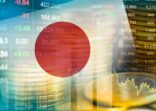Asia-Pacific bond funds have posted an average three-year cumulative performance of 8.58%, exceeding returns made by fixed income funds with US (6.39%), global (6.09%) and European (3.40%) mandates, according to FE Analytics data.
The sector was boosted by renewed confidence among major investors at the start of this year in the wake of the US Federal Reserve’s dovish interest rate stance. Blackrock, Fidelity, JP Morgan Asset Management and Standard Chartered Private Bank – among others – all turned positive on Asia bonds in January, attracted by stable economic fundamentals in the region and cheap bond valuations, both historically and compared with US and European credit.
Spreads over US treasury yields have narrowed to 130 basis points, which is the tightest they have been for over 90% of the time during the past five years, according to Bloomberg data.
The average Asia-Pacific fixed income fund generated a 5.18% total return in the first quarter of 2019, two percentage points more than US fixed income funds, the next best category, according to FE. After plateauing in May as US-China trade tensions escalated, they recovered their upward momentum this month (see chart).
David Tan, CIO for fixed income in Asia-Pacific at Allianz Global Investors and manager of the $1.4bn Allianz Dynamic Asian High Yield Bond Fund, argues in a recent paper that there are “four compelling reasons” to consider Asian US dollar-denominated bonds.
First, yields on investment grade bonds “remain at fair value” and are above their 10-year historical average for sub-investment grade bonds; second, Asia debt markets are continuing to grow as the region’s economies expand and have already reached around $1trn; third, policy makers will be supportive of a low interest rate environment that will nurture the development of regional bond market issuance; and finally, Asia bonds can help diversify global bond portfolios, enhancing returns while reducing risk.
Adding Asia bonds to a portfolio can increase yields while reducing risk

High yield risk
The best performing Asia bond funds over the last three years have predominantly invested in sub-investment grade, high yield bonds where there is – in theory – greater risk of credit deterioration or default.
In recent months, ratings agencies have warned about rising defaults in the onshore China bond market, but there seem to be few concerns about the offshore bonds of Chinese property companies, which comprise about 50% of the Asia high yield market, according to Bloomberg data.
Meanwhile, funds can find country diversification with allocations to liquid bonds from Malaysian, Indian, Indonesian, Philippine and Thai borrowers, and sector variety through exposure to energy and resources, telco and consumer issues.
The top performing fund in the category is also the biggest: the $6.71bn Value Partners Greater China High Yield Income Fund has achieved a 23.64% three-year return, and its portfolio is almost entirely made up of sub-investment grade bonds, including 51% rated single-B, according to its factsheet dated 30 April.
In contrast — excluding the HSBC ABF Hong Kong Bond Index Fund, which has a 98% weighting to double-A Hong Kong government bonds — the worst performer over the same time period is the Parvest Bond Asia Ex-Japan Classic Fund, which has a 76% allocation to investment grade bonds, according to its fact sheet at 30 April.
On the other hand, investors should expect more fluctuations in their returns if they own a fund invested in high yield bonds. The Value Partners’ three year annualised volatility of 4.86% is well above the Asia fixed income sector average of 3.47%.
Best and worst performing Asia-Pacific fixed income funds
| Fund |
3-year cumulative return % |
Annualised return % | Annualised volatility % |
Annualised information ratio |
| Value Partners Greater China High Yield Income |
23.64 |
7.30 | 4.86 |
1.29 |
| BEA Union Investment Asian Bond and Currency |
18.50 |
5.83 | 3.52 |
1.57 |
| Fidelity Asian High Yield |
17.83 |
5.48 | 3.49 |
0.98 |
| Sector average |
8.58 |
2.86 | 3.47 |
– |
| HS Mainland and Hong Kong Corporate Bond |
2.74 |
1.01 | 3.07 |
-0.81 |
| Parvest Bond Asia Ex-Japan Classic |
2.62 |
0.68 | 3.62 |
-1.53 |
| HSBC ABF Hong Bond Index |
-0.47 |
0.25 | 2.51 |
-0.87 |
Source: FE Analytics. Data in US dollars: 14 June 2016 – 14 June 2019
Asia-Pacific fixed income sector vs other regional fixed income sectors


















